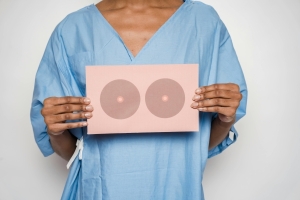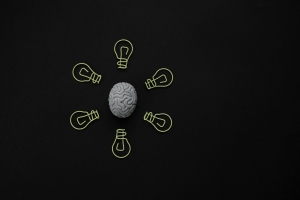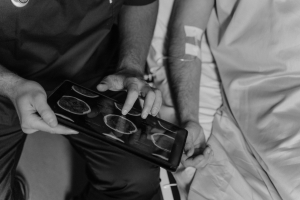History of Alcohol
September 30, 2024History of Alcohol
It is believed that alcoholic beverages originated in Prehistory, specifically during the Neolithic period when agriculture appeared and pottery was invented.
Did you know that...
- Alcoholic beverages emerged by chance during the Neolithic period in prehistory? (1,2)
- The regulation of wine trade became more consistent starting in the Middle Ages? (3,4)
- Proletarian Russian women in the early 20th century would put distilled liquor on pacifiers to soothe their children? (5)
- In 18th century England, gin was known as the drink of choice for women? (6)
- Despite the long-standing criticism of alcohol abuse throughout human history, the concept of alcoholism only emerged in the late 18th and early 19th centuries? (7)
When it all began...
Alcoholic beverages are believed to have originated in Prehistory, specifically during the Neolithic period, when agriculture and pottery emerged. Through a process of natural fermentation that occurred about 10,000 years ago, humans began to consume alcohol and ascribe different meanings to its use. The Celts, Greeks, Romans, Egyptians, and Babylonians recorded in some form the consumption and production of alcoholic beverages. (1,2)
Noah's Drunkenness
In na episode from the Bible´s Old Testament (Genesis 9:21), Noah, after the flood, planted a vineyard and made wine. He consumed the beverage to the point of becoming drunk. The Bible states that Noah shouted, took off his clothes, and passed out. Moments later, his son Ham found him "uncovered in his nakedness." This is the first known account of drunkenness. The famous Renaissance painter Michelangelo (1475-1564) was inspired by this episode to create a beautiful fresco, titled after it, on the ceiling of the Sistine Chapel in the Vatican. Thus, it is evident that not only the use of alcohol but also drunkenness has been present among humanity since its beginnings.
Alcohol Throughout History
Greece and Rome
The soil and climate in Greece and Rome were especially rich for grape cultivation and wine production. The Greeks and Romans also knew the fermentation of honey and barley, but wine was the most widespread beverage in both empires, holding social, religious, and medicinal importance. (1,8)
In Ancient Greece, the playwright Euripides (484 BC - 406 BC) mentions in the Bacchae two deities of great significance to humans: Demeter, the goddess of agriculture who provides solid food for nourishment, and Dionysus, the God of wine and festivity (Bacchus for the Romans). Despite wine playing an active role in Greco-Roman social and religious celebrations, alcohol abuse and drunkenness were already severely censured by both peoples. (1)
Ancient Egypt
The Egyptians documented the stages of beer and wine production, manufacturing, and trade in papyrus. They also believed that fermented beverages eliminated germs and parasites and should be used as medicine, especially in the fight against parasites from the waters of the Nile. (1,2)
Middle Ages
The commercialization of wine and beer grew during this period, as did its regulation. Alcohol intoxication (drunkenness) ceased to be merely condemned by the church and began to be considered a sin by this institution. (4)
Modern Age
During the Renaissance, oversight of cabarets and taverns began, with operating hours established for these places. Cabarets and taverns were seen as venues where people could express themselves freely, and the use of alcohol was part of political debates that would later trigger the French Revolution. (4)
Contemporary Age
The late 18th century and the onset of the Industrial Revolution were accompanied by demographic and behavioral changes in Europe. It was during this period that excessive drinking began to be viewed by some as a disease or disorder (7). In the early to mid-19th century, some scholars began to discuss the differences between distilled and fermented beverages, especially wine. Consequently, finding no harmful germs in wine, French scientist Louis Pasteur declared in 1865 that "this is the most hygienic of beverages." (9)
During the 20th century, countries like France established the legal drinking age at 18, and in January 1920, the United States enacted Prohibition, which lasted almost 12 years. Prohibition banned the manufacture, sale, barter, transport, importation, exportation, distribution, possession, and consumption of alcoholic beverages and was considered by many a disaster for public health and the American economy, as it created an illegal market for alcohol and consequently increased violence and crime in the country. (11)
It was in 1952, with the first edition of the DSM-I (Diagnostic and Statistical Manual of Mental Disorders), that alcoholism began to be treated as a disease. (7, 10)
In 1967, the concept of alcoholism as a disease was incorporated by the World Health Organization into the International Classification of Diseases (ICD-8), following the 8th World Health Conference. In the ICD-8, problems related to alcohol use were placed within a broader category of personality disorders and neuroses. These issues were divided into three categories: dependence, episodes of excessive drinking (abuse), and habitual excessive drinking. Alcohol dependence was characterized by compulsive use of alcoholic beverages and the manifestation of withdrawal symptoms after cessation of alcohol use. (14)
In modern times, starting in January 2022, the ICD-11 came into effect, bringing important updates to the general guidelines of the document, including specific updates on alcohol use disorders (15), which are:
- Greater specification of different patterns of harmful alcohol consumption, which can be continuous, episodic, and recurrent;
- A new diagnostic subcategory for single episodes of harmful consumption;
- The introduction of harmful alcohol consumption as a life risk factor;
In addition to other more technical nuances regarding the categorization of certain disorders, such as neurocognitive disorders related to alcohol use (15).
References:
1.Viala-Artigues, J. & Mechetti,C. (2003). Histoire de l´alcool archéologie partie 1.
2. McGovern, Patrick E. The Origins and Ancient History of Wine. (http://www.museum.upenn.edu/new/exhibits/online_exhibits/wine/wineintro.html).
3. Liappas,J.A., Lascaratos, J., Fafouti, S., Christodoulou, G.N., (2003). Alexander the Great´s relationship with alcohol. Addiction. 98. 561-567.
4. Viala-Artigues, J. & Mechetti,C. (2003). Histoire de l´alcool archéologie partie 2.
5. Phillips, L. (1999). In defense of their families: Working-Class Women, Alcohol, and Politics in Revolutionary Russia. Journal of Women´s History. Vol. 11. 97-120.
6. Warner,J. & Ivis, F. (2000). Centre for Addiction and Mental Health, Toronto. Eighteen-Century Life. 24. 85-105
7. Jerome, H.J. (1993). The concept of dependence: Historical Reflections. Alcohol Health and Research World. 17. 188-190.
8. Purcell, N. (2003). Diet, Community, And History At Rome. American Journal of Philology. 124. 329-358
(http://www.press.jhu.edu/journals/american_journal_of_philology/)
9. Viala-Artigues, J. & Mechetti,C. (2003). Histoire de l´alcool les temps modernes partie 1
10. Viala-Artigues, J. & Mechetti,C. (2003). Histoire de l´alcool les temps modernes partie 2
11. History of Alcohol. Alcohol and Tobacco Tax and Trade Bureau. US Department of Treasure
12.Lexicon of alcohol and drug terms – Organização Mundial de Saúde (OMS), 1994.
13.The natural history of alcoholism - George E. Vaillant. Harvard University Press, 1983.
14. Diagnostic Criteria for Alcohol Abuse and Dependence – National Institute on Alcohol Abuse and Alcoholism (NIAAA) - Alcohol Alert, No 30, 1995 (http://pubs.niaaa.nih.gov/publications/aa30.htm)
- Saunders JB, Degenhardt L, Reed GM, Poznyak V. Alcohol Use Disorders in ICD‐11: Past, Present, and Future. Alcohol Clin Exp Res [Internet]. 2019 Aug 23 [cited 2020 Jun 23];43(8):1617–31. Available from: https://onlinelibrary.wiley.com/doi/abs/10.1111/acer.14128
Harmful alcohol consumption and breast cancer
June 10, 2024Harmful alcohol consumption and breast cancer
Understand how harmful alcohol consumption can be related to the disease.
Cancer is one of the leading death causes worldwide, responsible for approximately 10 million deaths in 2020, or almost one in every six deaths. Breast cancer is currently the most prevalent tumor worldwide. Factors that increase the risk of breast cancer include old age, obesity, harmful alcohol consumption, family history of breast cancer, radiation exposure, gynecological history (age of menarche, first pregnancy, etc.), smoking, and postmenopausal hormone therapy (1).
Excess alcohol has carcinogenic potential, that is, it can cause various types of cancer. There is epidemiological evidence that alcohol consumption increases the risk of tumors in many organs, for example, in the oral cavity, larynx, esophagus, liver, pancreas and colorectum (2). According to the Global Cancer Observatory of the International Agency for Research on Cancer (IARC), an institution part of the WHO, 4.1% of new cases in 2020 were attributable to alcohol consumption.
Effects of alcohol on breast cancer (3)
Alcohol consumption is well established as a risk factor for breast cancer. The involvement of alcohol consumption in breast cancer is a complex process that acts through several mechanisms. And although alcoholic beverages contain a variety of compounds that contribute to carcinogenesis (the process of cancer formation), alcohol itself appears to be the most important component in this case.
However, the underlying mechanisms for alcohol to be carcinogenic still need to be clarified. Potential mechanisms include: oxidative stress, cell proliferation, effects on hormones (particularly steroid hormones), and effects on carbon metabolism.
When ingested, alcohol is metabolized into acetaldehyde, classified as carcinogenic by IARC. Although the production of acetaldehyde from alcohol occurs mainly in the liver, it also occurs in breast tissues and one of the adverse effects of acetaldehyde include modifications to DNA. Hormonal effects due to alcohol consumption may also contribute to breast cancer. Consumption of alcoholic beverages increases hormone levels. One study reported that consumption of 30g of ethanol (~2.5 drinks) per day for three menstrual cycles was associated with a 28% increase in plasma estradiol and a 21% increase in plasma estrone among women aged 21 to 40 years (4). Elevated intracellular estrogen levels resulting from alcohol intake may promote cancer-related cell proliferation in breast tissue.
Different patterns of alcohol consumption may have different effects on the development of breast cancer, even when the total amount of alcohol intake is constant (5). According to IARC, the risk of developing breast cancer increases by 7 to 10% for every 10g (∼1 drink) of alcohol consumed daily by adult women. This association is observed in both premenopausal and postmenopausal women. Compared to other organs, the breast appears to be more susceptible to the carcinogenic effects of alcohol. This raises a clinical and public health concern, because almost half of women of childbearing age drink alcohol and 15% of drinkers at this age drink four or more drinks at the same time (4).
In Brazil, for example, a study carried out by FIOCRUZ (6) with more than 1,500 women under 50 years of age showed that those who consumed alcohol regularly for 10 years or more had a three times greater risk of developing breast cancer compared to teetotalers or occasional drinkers.
Healthy habits are essential for preventing breast cancer and other diseases, so try to practice physical activity, maintain adequate body weight, adopt a balanced diet and, if you decide to drink, consume in moderation.
References:
- OMS (2023). Brest cancer. Disponível em: https://www.who.int/news-room/fact-sheets/detail/breast-cancer.
- Connor, Jennie. "Alcohol consumption as a cause of cancer." Addiction 112.2 (2017): 222-228.
- Freudenheim JL. Alcohol's Effects on Breast Cancer in Women. Alcohol Res. 2020 Jun 18;40(2):11.
- Liu, Ying, Nhi Nguyen, and Graham A. Colditz. "Links between alcohol consumption and breast cancer: a look at the evidence." Women’s health 11.1 (2015): 65-77..
- Starek-Świechowicz, B., Budziszewska, B., & Starek, A. (2023). Alcohol and breast cancer. Pharmacological reports : PR, 75(1), 69–84. https://doi.org/10.1007/s43440-022-00426-4
- Vieira R, Tobar JSS, Dardes R, Claudio L, Thuler S. Alcohol Consumption as a Risk Factor for Breast Cancer Development: A Case-Control Study in Brazil. Asian Pac J Cancer Prev. 2018 Mar 27;19(3):703-707.
Can alcohol cause premature aging?
July 23, 2024Can alcohol cause premature aging?
A study conducted by the University of Nagoya in Japan shows an association between the harmful effects of aldehydes on DNA, which may be related to premature aging.
It is known that aging is a normal developmental process involving physiological changes (1). Additionally, the body is influenced by environmental and sociocultural factors such as quality of life, lifestyle, diet, sedentarism, and physical exercise, which are directly related to healthy or pathological aging (1).
In light of this, alcohol consumption has been cited as a factor that may be involved in the process of premature aging. A British study (2) aimed at investigating the effects of alcohol on aging showed that excessive alcohol consumption can damage DNA, specifically in telomeres – repetitive structures of proteins and DNA that form the ends of chromosomes and act to prevent genetic material wear and tear. According to the study, increased oxidative stress caused by excessive alcohol may directly contribute to the shortening of these DNA structures.
Similarly, a recent Japanese study published in the journal Nature Cell Biology (3) demonstrated how the harmful effects of aldehydes on DNA may also be associated with premature aging. But where does alcohol fit into this scenario?
After alcohol ingestion, ethanol is rapidly absorbed by our body. Alcohol metabolism begins with the action of the enzyme alcohol dehydrogenase (ADH), which converts alcohol into acetaldehyde, a substance that is toxic to the body even in small concentrations. Then, the enzyme aldehyde dehydrogenase (ALDH) converts acetaldehyde into acetate.
The study points out that aldehydes are genotoxic agents* because they interfere with DNA-protein replication and transcription, and such types of damage are particularly harmful since they can lead to cell death if not repaired. As a result, researchers suggest that aldehydes as metabolic by-products are associated with premature aging.
The research first identified a previously uncharacterized DNA repair pathway: transcription-coupled DNA-protein crosslink repair. As a result, the study showed that transcription-coupled DNA-protein repair, as well as aldehyde clearance, were crucial for protection against metabolic genotoxins. This could explain the molecular pathogenesis of AMeDS (aldehyde metabolic deficiency syndrome, characterized by bone marrow deficiency, intellectual deficiency and dwarfism) and other disorders associated with defects in transcription-coupled repair, such as Cockayne syndrome (rare, autosomal recessive disorder, with unknown pathogenesis and with impairment in growth and progressive neurological dysfunction).
According to researchers (4), this study has implications beyond genetic diseases, as its findings suggest that aldehyde-induced DNA damage may also play a role in the aging process in healthy individuals. They also mention the importance of strategies to combat aging in healthy individuals, such as controlling exposure to substances that induce aldehyde production, such as alcohol intake and exposure to pollution and smoke.
*Genotoxic agents are those that interact with DNA producing changes in its structure or function.
References:
- Santos FH dos, Andrade VM, Bueno OFA. Envelhecimento: um processo multifatorial. Psicologia em Estudo [Internet]. 2009 Mar 1;14:3–10. Available from: https://www.scielo.br/j/pe/a/FmvzytBwzYqPBv6x6sMzXFq/
- Topiwala A, Taschler B, Ebmeier KP, Smith S, Zhou H, Levey DF, et al. Alcohol consumption and telomere length: Mendelian randomization clarifies alcohol’s effects. Molecular Psychiatry [Internet]. 2022 Jul 26;1–8. Available from: https://www.nature.com/articles/s41380-022-01690-9#Sec10
3. Oka Y, Nakazawa Y, Shimada M, Ogi T. Endogenous aldehyde-induced DNA–protein crosslinks are resolved by transcription-coupled repair. Nature Cell Biology [Internet]. 2024 Apr 10;1–13. Available from: https://www.nature.com/articles/s41556-024-01401-2
- Impact of aldehydes on DNA damage and aging [Internet]. NU Research Information. [cited 2024 Jul 1]. Available from: https://www.nagoya-u.ac.jp/researchinfo/result-en/2024/04/20240411-01.html
Gout and alcohol consumption
June 10, 2024Gout and alcohol consumption
How can alcohol consumption affect Gout?
According to the Brazilian Society of Rheumatology (1), gout is an inflammatory disease that mainly affects the joints and occurs when the level of uric acid in the blood is above normal levels (hyperuricemia). As alcohol consumption is one of the risk factors for this disease, recent research (2) sought to analyze the association between alcohol consumption and damage caused by gout, especially the formation of “tophi”. These are skin nodules that generally form around joints, such as the knees, elbows and fingers.
In this Chinese study, more than 500 patients diagnosed with gout were studied, and it was sought to evaluate the association of gout with the frequency of consumption, as well as the quantity, time and type of alcoholic beverage consumed. To compare consumption patterns, the researchers separated three groups: abstainers, moderate drinkers and excessive drinkers. In general, excessive drinkers are those who consume more than 5 alcoholic drinks per week.
The researchers found significant associations between the consumption pattern and the appearance and severity of tophi resulting from gout. Compared to abstainers, people who drank excessively had a higher proportion of tophi, with greater size and quantity. Excessive consumption increases the chance of detecting tophi by 79%. Furthermore, long-term drinking, defined as consumption for more than ten years, increased the chances of detecting tophi by 96%; finally, the drinking of distilled beverages more than doubled the chances of detecting gout tophi.
Given these data, the authors concluded that long-term, excessive alcohol consumption and distilled beverages were predictors for the development of severe gout, with the appearance of tophi. Furthermore, for people who already have tophi, the authors conclude that any amount of alcohol (even moderate) leads to the worsening of the condition, with the appearance of more tophi.
References:
- Sociedade Brasileira de Reumatologia. Doenças reumáticas: Gota. 2022. Disponível em: https://www.reumatologia.org.br/doencas-reumaticas/gota/
- Han, L., Li, R., Lu, J., Ren, W., Ning, C., Pang, J., ... & Li, C. (2023). Association of the quantity, duration, and type of alcohol consumption on the development of gouty Tophi. Arthritis Care & Research, 75(5), 1079-1087.
Are the brains of men and women differently affected by alcohol and stress?
A new study looks at how the brains of men and women diagnosed with alcohol use disorder respond to stressful stimuli and triggers for alcohol consumption. The differences found are surprising!
Stress is an aggravating factor for alcohol consumption and significantly affects mental health. In this sense, drinking to deal with negative emotions should be considered a warning sign, as it increases the chances of problems with alcohol. In cases where alcohol is already a problem, any stress or trigger, such as seeing images of people drinking, can increase the risk of binge drinking.
Seeking to understand how biological sex can affect these aspects, researchers at Yale University carried out a survey of 77 participants (46 men and 31 women) diagnosed with disorders associated with alcohol use. These participants were asked to view 3 types of images while “mapping” of the brain activity of these individuals was carried out (a technique called “functional magnetic resonance imaging”). After this mapping, patients were monitored for eight weeks regarding their daily alcohol consumption.
The main objective of the research was to evaluate how different “maps” of brain activity were associated with days of heavy drinking over the following eight weeks. And indeed, the researchers found some significant differences: for example, among women, a lower level of brain activation in a region called the anterior cingulate cortex was found to be correlated with more days of heavy drinking. This finding was not observed in males, who, in turn, had a higher level of activation in brain regions known as the hypothalamus and hippocampus.
All of these regions are important components of the brain reward system, and are linked to drug addiction. Such results lead researchers to point out the possibility that alcohol consumption among female and male people occurs due to the activation of different regions of the reward system, highlighting the need to search for different therapeutic strategies according to the sex of the patient. Although more studies are needed to reach a more solid conclusion on the subject, these results contribute to a general trend in the health sector to provide more individualized therapeutic care, taking into account not only disorders, but various characteristics of the individual, such as gender and age.
References:
Radoman, M., Fogelman, N., Lacadie, C., Seo, D., & Sinha, R. (2024). Neural correlates of stress and alcohol cue-induced alcohol craving and of future heavy drinking: evidence of sex differences. American journal of psychiatry, 181(5), 412-422.
Alcohol consumption and risk of dementia
June 10, 2024Alcohol consumption and risk of dementia
Study analyzes the impact of alcohol consumption on regions of the brain and the impact on the development of dementia.
Recently, several media outlets published a study showing the main risk factors for the development of dementia, with harmful alcohol consumption, air pollution and diabetes being the three main ones. The study, carried out by researchers at the University of Oxford, and published in the journal Nature Communications, presents a sophisticated methodology for analyzing a United Kingdom database, the UK Biobank, already used in other studies published by CISA.
The study, published in March 2024, analyzed the effect of risk factors on a set of brain regions with greater vulnerability to the aging process and dementia. In total, 15 risk factors for dementia were investigated, such as diabetes, blood pressure, cholesterol level, weight, smoking, air pollution, socialization and alcohol consumption. To carry out this investigation, an analysis of the genome of around 40 thousand people was carried out through the UK Biobank.
Seeking to identify the risk factors associated with the degeneration of a brain network known as LIFO, the authors first investigated the natural reduction of gray matter (a region containing neurons) presented by the 40,000 biobank data. This LIFO network is associated with important cognitive functions such as attention, working memory and other cognitive functions. After that, along with genetic analysis, the researchers compared the results of the LIFO network degeneration with data from participants about the modifiable risk factors mentioned above, important for the development of dementia.
The authors point out that this study reveals both genetic and modifiable risk factors associated with one of the most fragile regions of the brain for aging and the development of dementia. The authors conclude that the findings pave the way for new research on aging.
References:
Manuello, J., Min, J., McCarthy, P., Alfaro-Almagro, F., Lee, S., Smith, S., ... & Douaud, G. (2024). The effects of genetic and modifiable risk factors on brain regions vulnerable to ageing and disease. Nature Communications, 15(1), 2576.
Effects of Reducing or Ceasing Alcohol Consumption on Cancer Risk
In 2020, it was estimated that 741,300 new cancer cases worldwide were caused by alcohol consumption. This represents 4.1% of all new cancer cases, with 6.1% among men and 2.0% among women (1).
An independent group of international experts convened by the International Agency for Research on Cancer (IARC) reviewed the existing literature to assess the effectiveness of reducing or stopping alcohol consumption in decreasing the risk of alcohol-related cancers, such as cancers of the oral cavity, pharynx, larynx, esophagus, colorectal area, liver, and female breast. Additionally, the group identified and evaluated the mechanisms of alcohol-induced carcinogenesis that may be reversed with cessation of consumption (2).
The IARC classifies alcoholic beverages, ethanol in these beverages, and acetaldehyde associated with alcohol consumption as carcinogens for humans. In addition to ethanol and acetaldehyde, alcoholic beverages may contain various toxins derived from raw materials used or that may arise during the production process.
There are several mechanisms linking alcohol to cancer, one of the most well-understood scientifically being genotoxicity, where acetaldehyde causes damage to our DNA, such as breaks and structural changes. These alterations can lead to errors in DNA replication, resulting in mutations. Over time, these mutations can accumulate and lead to cancer development, especially in parts of the body that come into direct contact with alcohol, such as the mouth, throat, and esophagus (2).
An important measure used is the Population Attributable Fraction (PAF), which helps understand how many cancer cases can be attributed to alcohol consumption in a population. To calculate PAF, researchers use data on: how much people drink; the cancer risk associated with alcohol; how many cancer cases exist. However, there are limitations, such as incomplete data, underreporting of alcohol consumption, other factors affecting the data (like smoking), and population differences. Despite these limitations, PAF is useful for understanding and preventing alcohol-related cancers.
CISA, in its annual report “Alcohol and Brazilian Health,” uses these fractions to calculate the burden of alcoholic beverages on the Brazilian population. To learn more, download the report for free on our website.
According to the study conducted by the IARC, reducing or ceasing alcohol consumption is associated with a lower risk of oral and esophageal cancers, with sufficient evidence to support this conclusion. There is limited evidence suggesting a reduction in the risk of laryngeal, colorectal, and breast cancers with the cessation of alcohol consumption. However, there is inadequate evidence to indicate that reducing or ceasing alcohol consumption lowers the risk of pharyngeal and liver cancers. Overall, researchers conclude that stopping alcohol consumption may be beneficial for reducing the risks of certain types of cancer, but the strength of the evidence varies among different cancer types.
References:
- Rumgay, H., Shield, K., Charvat, H., Ferrari, P., Sornpaisarn, B., Obot, I., Islami, F., Lemmens, V. E. P. P., Rehm, J., & Soerjomataram, I. (2021). Global burden of cancer in 2020 attributable to alcohol consumption: a population-based study. The Lancet. Oncology, 22(8), 1071–1080. https://doi.org/10.1016/S1470-2045(21)00279-5
- International Agency For Research On Cancer. IARC Handbooks of Cancer Prevention: volume 20A - Reduction or cessation of alcoholic beverage consumption. Lyon: IARC, 2024








